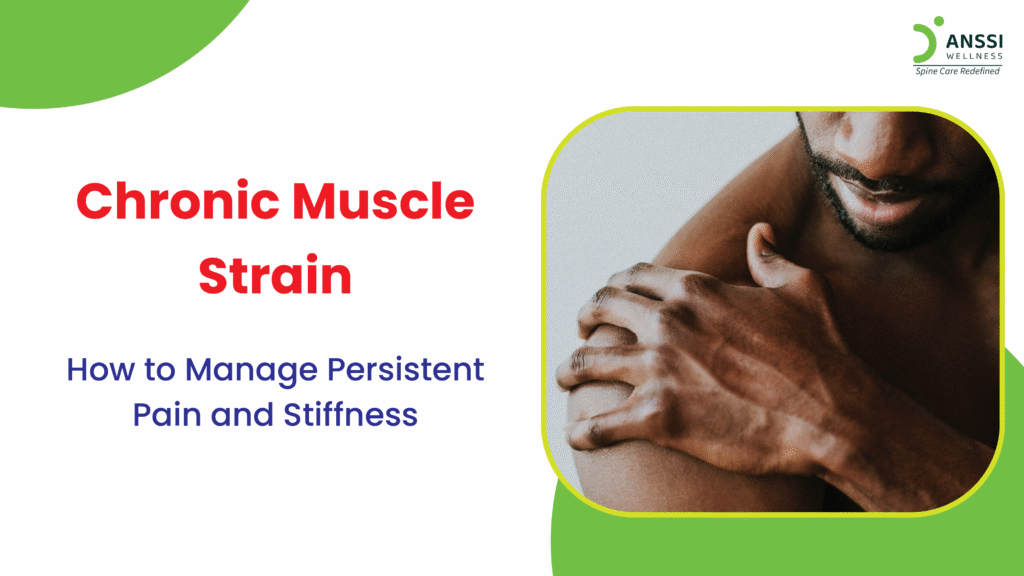Chronic muscle strain is more than the occasional twinge after a workout; it’s a long-term issue where muscles remain tight, sore, and prone to fatigue. Unlike acute strains that heal with rest, chronic strain persists, affecting strength, mobility, and daily comfort.
Common Causes of Chronic Muscle Strain
If you are suffering from chronic muscle strain, it might be due to any of the following.
- Repetitive or Improper Movements: Overuse from repetitive tasks, like typing, lifting, or sports, causes microtears that accumulate over time if not given time to heal.
- Poor Posture and Sedentary Behaviour: Whether sitting for hours or standing with misalignment, muscles become overworked while compensating, leading to strain and imbalance.
- Inadequate Warm-Up or Recovery: Skipping warm-ups or performing intense routines without proper cool-downs leads to stiffness and insufficient healing.
- Stress and Muscle Tension: Chronic emotional stress tightens muscles, especially in the neck, shoulders, and back, exacerbating strain.
Symptoms to Notice
Take note if any of the following symptoms appear.
- A persistent, dull ache or tightness that doesn’t ease
- Stiffness that worsens after periods of rest or in the morning
- Limited range of motion or premature fatigue during activity
- Muscle spasms or palpable “knots” (trigger points)
Effective Pain Management Strategies
Here is how you can manage your chronic muscle strain issues.
Heat and Cold Therapy
Apply cold packs immediately after strain to reduce inflammation. Later, use warmth like hot packs or baths, to relax tight muscles and promote blood flow.
Gentle Stretching and Low-Impact Exercise
Daily stretching and low-impact activities like walking or swimming, restore flexibility and strengthen supporting muscles without overloading them.
Massage and Myofascial Release
Techniques like foam-rolling and targeted massage release trigger points, improve circulation, and restore extensibility in tight muscle fibres.
Stress Management
Incorporate mindfulness, deep breathing, yoga, or meditation into your routine to reduce muscle tension driven by emotional stress.
When to Seek Professional Help
Consult a professional if:
- Pain persists beyond a few weeks or is severe.
- You experience limited mobility, persistent stiffness, or disrupted sleep.
- You suspect nerve involvement or spinal issues.
A physiotherapist can customise your exercise plans, assess underlying issues, and integrate non-surgical treatments or manual therapies to accelerate recovery.
Long-Term Management and Prevention
Build sustainable habits for long-term muscle health.
- Adopt ergonomics: Ensure proper posture at your desk, during exercise, and while resting.
- Consistently stretch: Prioritise flexibility after prolonged inactivity and intense workouts.
- Sleep well: Use supportive mattresses and maintain good sleep posture.
- Hydrate and eat well: Proper nutrition and hydration help muscles recover and reduce inflammation.
About ANSSI:
ANSSI Wellness focuses on improving the quality of life for patients suffering from spinal issues, aiming to provide relief where other conventional treatments have failed. Through advanced non-surgical spinal decompression treatment, ANSSI is committed to helping patients avoid surgery and recover in a safe, effective, and compassionate environment.
Connect with ANSSI Wellness on LinkedIn, Instagram, and Facebook for expert guidance.



